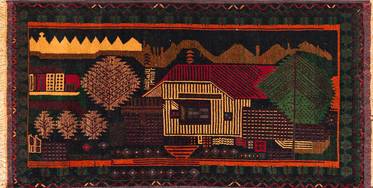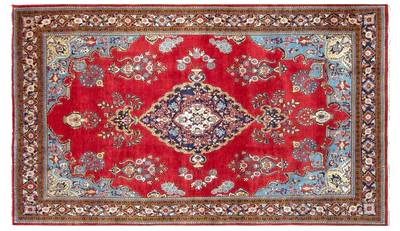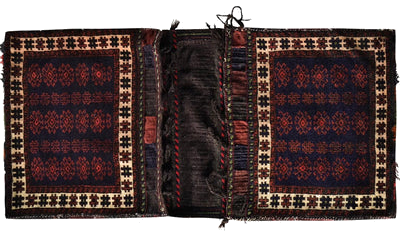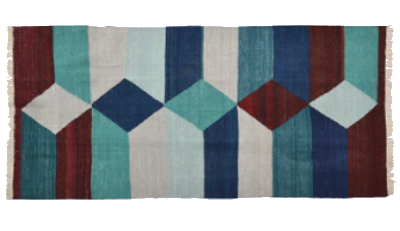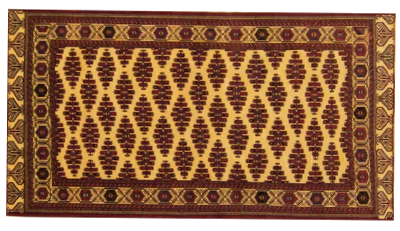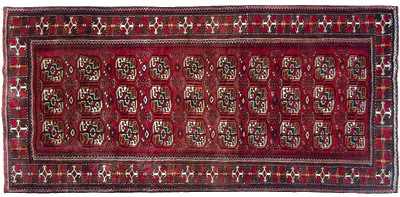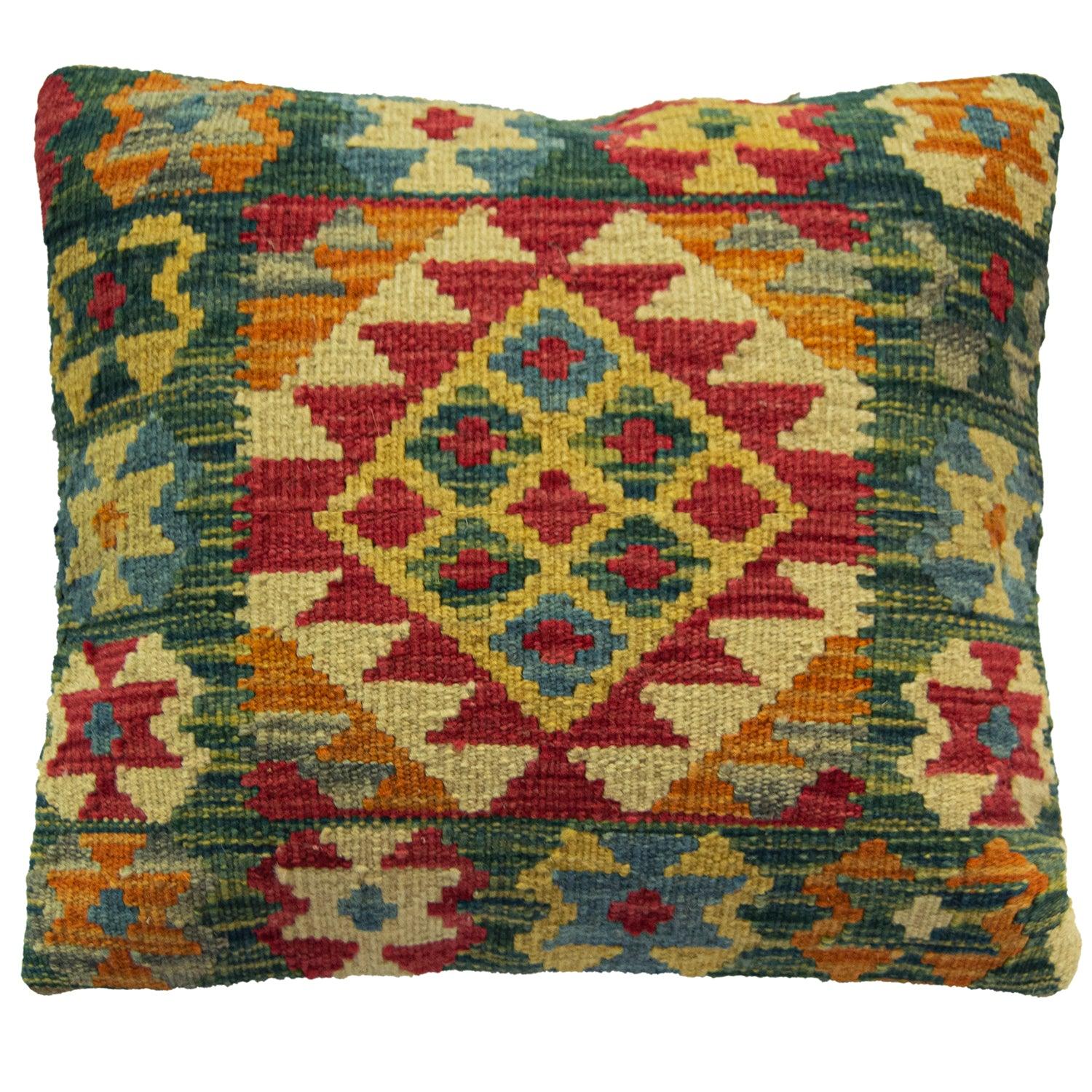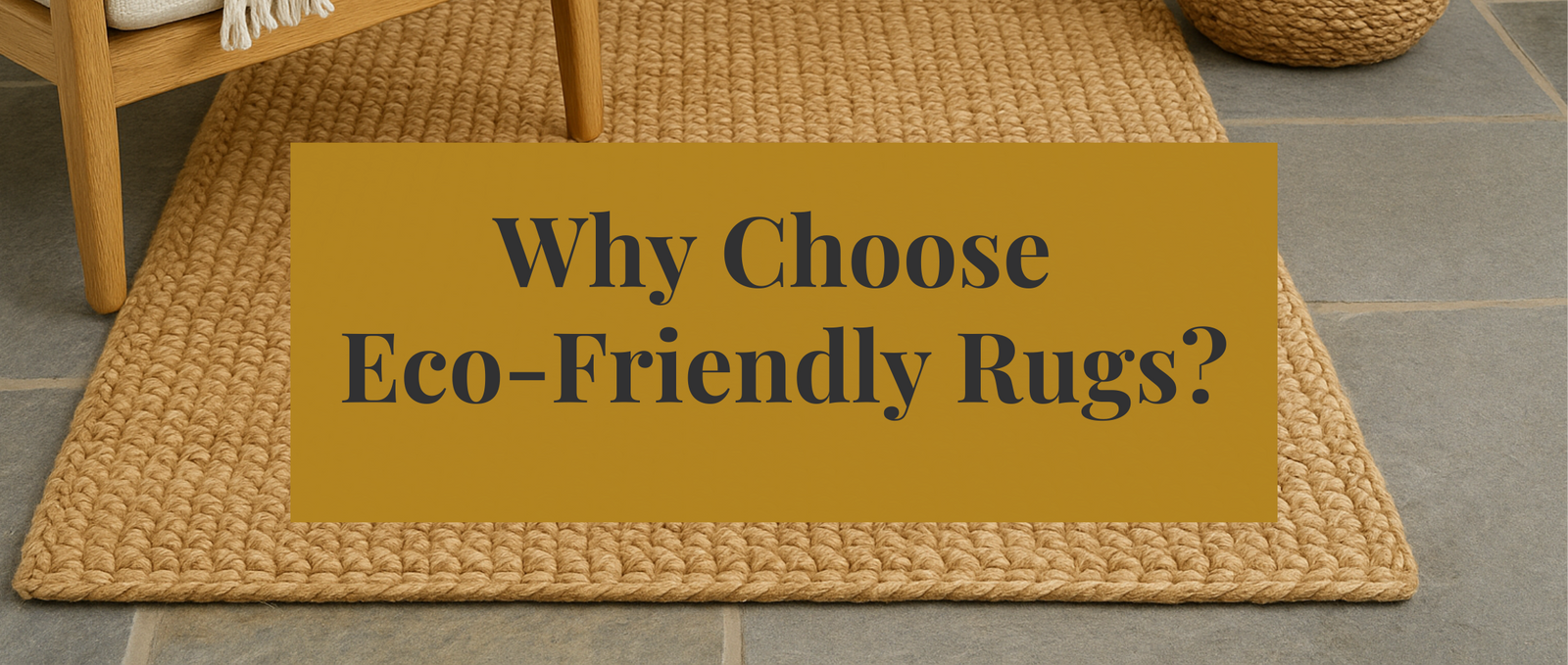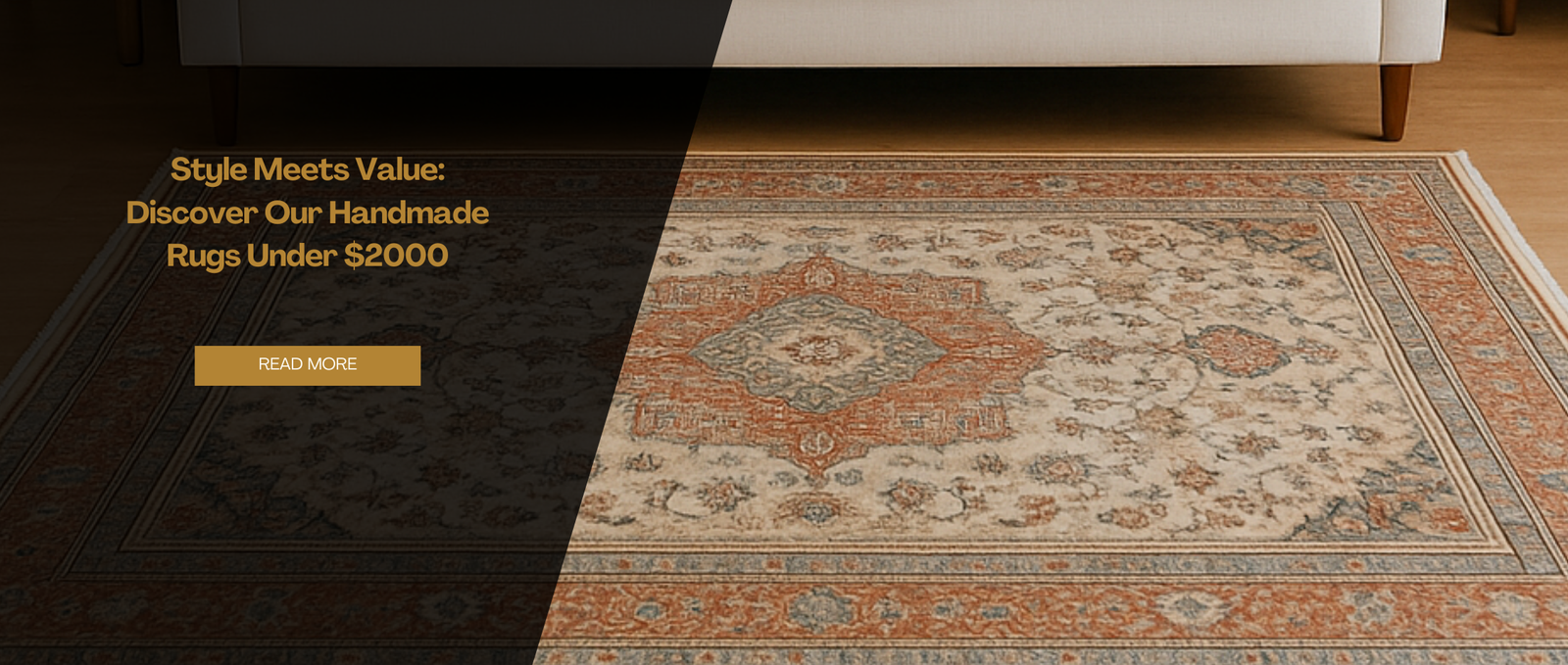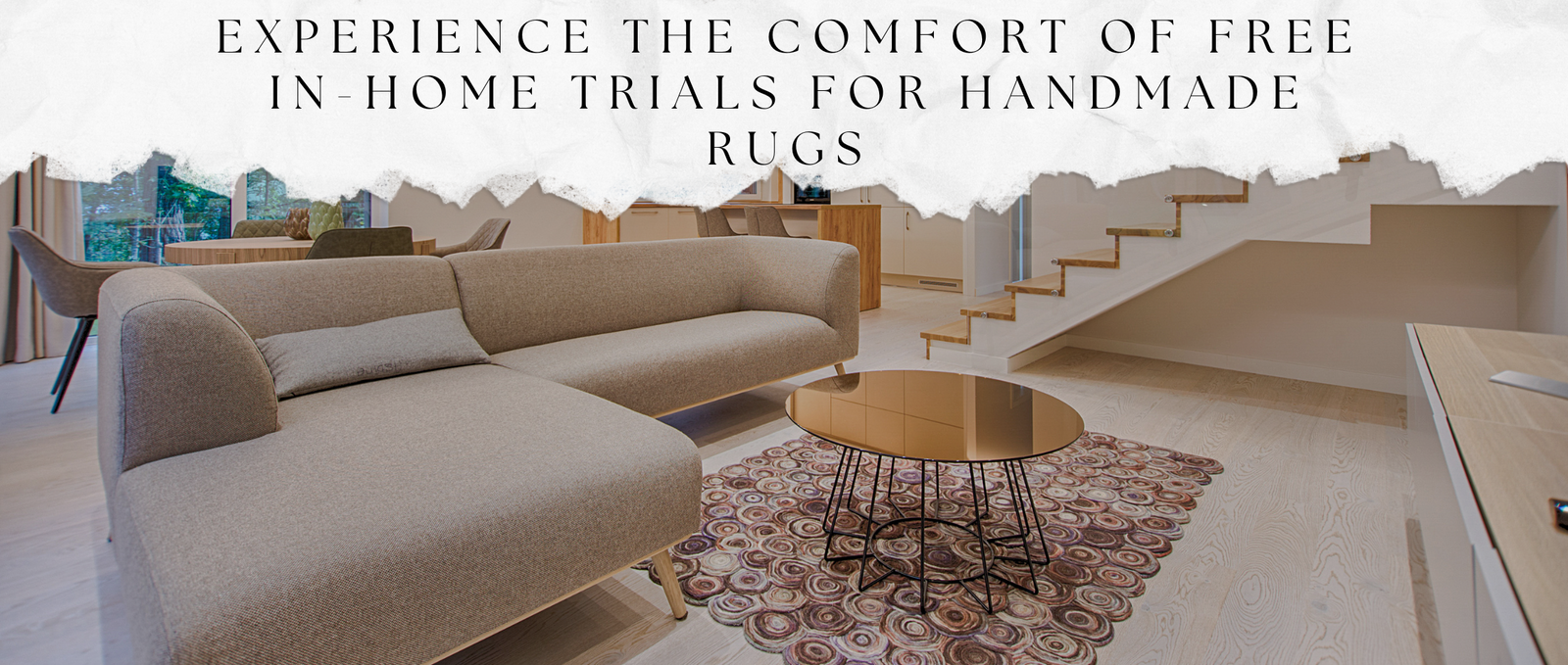Introduction

Persian rugs have a rich history dating back over 2,500 years, showcasing the artistic heritage and craftsmanship of Iranian weavers. These exquisite rugs hold an esteemed position in home décor, adding sophistication and elegance to any room. This guide will provide valuable insights into the diverse styles, patterns, and colours of Persian rugs, enabling you to make an informed decision when selecting the perfect rug for your home.
Key Characteristics of Persian Rugs
Understanding the key characteristics of Persian rugs can help you appreciate their artistic and cultural significance. These unique rugs stand out due to their handmade craftsmanship, high-quality materials, and distinctive designs and patterns.
Handmade Craftsmanship
One of the most notable features of Persian rugs is their handmade craftsmanship. Skilled weavers painstakingly knot each rug by hand, following time-honoured techniques passed down through generations. This laborious process can take several months to complete, depending on the rug's size and complexity. The result is a one-of-a-kind piece of art that showcases the weaver's skill and creativity, ensuring that no two rugs are identical.
High-Quality Materials
Another defining characteristic of Persian rugs is the use of high-quality materials. Traditionally, these rugs are made from luxurious natural fibres, such as wool, cotton, and silk. The choice of materials contributes to the rug's durability and longevity, enabling it to withstand daily wear and tear while retaining its beauty and value. Moreover, the vibrant colours found in Persian rugs are often derived from natural dyes sourced from plants, insects, and minerals, further enhancing their organic appeal.
Unique Designs and Patterns
Lastly, Persian rugs are renowned for their unique designs and patterns that reflect the rich cultural heritage of Iran. Each rug tells a story through its intricate motifs and symbolism, often inspired by the weaver's surroundings, beliefs, and personal experiences. Persian rug designs vary widely, ranging from geometric to floral, animal, and abstract patterns. This diversity of designs ensures that there is a Persian rug to suit every aesthetic and interior style, making them a highly sought-after addition to homes worldwide.
Styles of Persian Rugs
The diversity in styles of Persian rugs is a testament to the rich cultural heritage of Iran. These styles can generally be categorised into tribal rugs, city rugs, village rugs, and modern Persian rugs, each having its own distinctive features and charm.
Tribal Rugs
Tribal rugs, as the name suggests, are created by nomadic tribes in Iran. These rugs often feature simple, geometric designs that reflect the weavers' surroundings and experiences. Handwoven with locally sourced wool, tribal rugs showcase a vibrant colour palette derived from natural dyes. Popular tribal rug designs include Bakhtiari, Qashqai, and Turkoman, each representing the artistic traditions of their respective tribes.
City Rugs
City rugs, on the other hand, are produced in urban centres where weavers have access to more sophisticated resources and materials. These rugs often exhibit intricate, curvilinear designs that can include elaborate floral motifs, medallions, and scenes from Persian mythology. City rugs are typically made from high-quality materials, such as silk and fine wool, contributing to their luxurious appeal. Some of the most famous city rug designs originate from cities like Tabriz, Isfahan, and Qum, each known for its distinct weaving style and patterns.
Village Rugs
Village rugs are created in rural areas, often showcasing a blend of tribal and city rug characteristics. These rugs typically feature geometric patterns, but they may also incorporate stylised floral motifs. Village rugs tend to have a more relaxed, casual aesthetic that can add warmth and charm to any space. Well-known village rug designs include Gabbeh, Hamadan, and Shiraz, each reflecting the artistic sensibilities of their respective villages.
Modern Persian Rugs
Modern Persian rugs are a contemporary take on traditional rug designs, catering to today's diverse interior styles. While retaining elements of classic Persian rugs, these modern pieces often experiment with new colours, patterns, and textures. Contemporary designs can range from abstract interpretations of classic motifs to minimalist, monochromatic compositions that complement modern décor schemes. This fusion of old and new allows modern Persian rugs to bring an element of timeless elegance to contemporary spaces.
Patterns in Persian Rugs
The artistic beauty of Persian rugs lies in the rich tapestry of patterns and motifs that adorn each piece. These patterns can be broadly categorised into geometric, floral, animal, and abstract designs, with each style carrying its own significance and visual appeal.
Geometric Patterns
Geometric patterns are a prominent feature in many Persian rugs, particularly tribal and village rugs. These patterns are characterised by bold, angular shapes and repetitive motifs that convey a sense of balance and order. The significance of geometric patterns lies in their representation of the weavers' natural surroundings and cultural beliefs. Some common geometric motifs found in Persian rugs include diamonds, stars, and stylised animals.
Floral Patterns
Floral patterns, on the other hand, are more commonly associated with city rugs. These designs showcase the weavers' skill in creating intricate, curvilinear forms that evoke the beauty and abundance of nature. Floral patterns often carry symbolic meanings, with certain flowers representing love, fertility, or spiritual growth. Popular floral motifs in Persian rugs include the Shah Abbasi, the Islimi, and the Gol-o-Bolbol (flower and nightingale).
Animal Patterns
Animal patterns are another fascinating aspect of Persian rug design, reflecting the weavers' close relationship with the natural world. These patterns typically depict stylised animals, birds, and insects, either as standalone motifs or integrated into other design elements. The significance of animal patterns can vary, with some animals symbolising strength and courage, while others represent wisdom or spiritual guidance. Typical animal motifs in Persian rugs include lions, peacocks, and deer.
Abstract Patterns
Abstract patterns in Persian rugs showcase the weavers' creative imagination and artistic freedom. These designs often depart from traditional motifs, incorporating non-representational shapes and forms that can evoke a sense of mystery and intrigue. The significance of abstract patterns may be open to interpretation, allowing the viewer to engage with the rug on a personal, emotional level. Various abstract motifs can be found in Persian rugs, ranging from free-flowing lines and shapes to more structured, geometric compositions.
Colours in Persian Rugs
The colours in Persian rugs play a crucial role in defining their visual appeal and artistic expression. This section will explore the traditional colour palette, modern colour trends, and tips for choosing the right colours for your rug.
Traditional Colour Palette
Persian rugs have long been admired for their rich, vibrant colours, derived from natural dyes. These dyes are extracted from plants, insects, and minerals, resulting in a diverse colour palette that can range from deep reds and blues to earthy browns and greens. The significance of colours in Persian rugs goes beyond mere aesthetics, as each hue can carry symbolic meanings and cultural associations. For instance, red may represent courage or passion, while blue signifies spirituality or tranquillity.
Modern Colour Trends
As Persian rug designs have evolved over time, so too have the colours used in their creation. Modern colour trends often incorporate synthetic dyes, which offer a wider range of hues and greater colourfastness compared to their natural counterparts. This shift has led to the emergence of contemporary colour combinations that can complement a variety of interior styles, from minimalist and monochromatic to eclectic and bold.
Choosing the Right Colours
When selecting a Persian rug, it is essential to consider the colours that will best coordinate with your room décor and personal preferences. This involves taking into account the existing colour scheme of your space, as well as the mood and atmosphere you wish to create. For a harmonious and cohesive look, you can opt for a rug with colours that complement your furniture and accessories. Alternatively, if you want to make a statement with your rug, consider choosing a piece that features contrasting or bold colours that will stand out and draw attention. Ultimately, the right colours for your Persian rug should reflect your individual style and enhance the overall aesthetics of your home.
How to Identify and Evaluate Persian Rugs
When it comes to selecting a Persian rug, it is essential to know how to identify and evaluate its quality, authenticity, and value. By understanding these factors, you can make an informed decision and invest in a piece that will stand the test of time, both in terms of aesthetics and durability.
Evaluating Craftsmanship and Quality
An important aspect of evaluating a Persian rug's quality lies in examining its craftsmanship. One key indicator is the knot count, which refers to the number of knots per square inch (KPSI) in the rug. Generally, a higher knot count signifies a more intricate and detailed design, often translating to a higher-quality rug. However, it is essential to consider the rug's material and weave as well, since these factors also contribute to its overall quality and durability. For instance, rugs made from high-quality materials like silk and fine wool tend to be more durable and retain their beauty longer than those made from synthetic fibres.
Identifying Authentic Persian Rugs
Another crucial aspect of selecting a Persian rug is ensuring its authenticity. Authentic Persian rugs typically feature a rug origin and signature woven into the design, which can help you determine the rug's provenance and the weaver's identity. Additionally, handmade Persian rugs often display slight imperfections in their weave, indicating their unique craftsmanship. In contrast, machine-made rugs tend to have a uniform appearance, lacking the individuality and charm of their handmade counterparts.
Determining Rug Value
Lastly, it is essential to consider a Persian rug's value before making a purchase. The value of a rug can be influenced by various factors, including its age, condition, rarity, and demand. Older rugs in good condition are often more valuable, as they showcase the craftsmanship and design aesthetics of a bygone era. Similarly, rare designs and patterns can command a higher price, as they are sought after by collectors and connoisseurs. By taking these factors into account, you can better determine the value of a Persian rug and make a wise investment in a piece that will enhance your home for years to come.
Caring for Your Persian Rug
Proper care and maintenance are essential to preserving the beauty and value of your Persian rug. By following the appropriate cleaning techniques, addressing any necessary repairs and restorations, and taking preventive measures to avoid damage, you can extend the life of your rug and keep it looking its best for years to come.
Proper Cleaning Techniques
Regular cleaning is crucial to maintain the appearance and durability of your Persian rug. Vacuuming your rug gently and frequently can help remove dirt and debris that may cause wear and tear. For more thorough cleaning, it is advisable to seek professional rug cleaning services, as they have the expertise and equipment to handle delicate materials and intricate designs. Additionally, it's important to address spills and stains promptly, using a damp cloth to blot the affected area and avoid rubbing or scrubbing, which could cause further damage.
Rug Repair and Restoration
Over time, your Persian rug may require repair or restoration due to wear, damage, or ageing. In such cases, it is essential to consult a professional rug repair specialist who can assess the rug's condition and recommend the appropriate course of action. Whether it's reweaving damaged sections, repairing fringes, or restoring faded colours, an experienced rug repair expert can help bring your rug back to its original beauty and ensure its longevity.
Preventing Damage and Extending Rug Life
Preventive measures can go a long way in protecting your Persian rug from damage and prolonging its life. Some useful tips include using a rug pad or underlay to prevent slipping and provide cushioning, rotating your rug periodically to ensure even wear, and avoiding prolonged exposure to direct sunlight, which can cause colours to fade. By taking these steps, you can maintain the aesthetic appeal and structural integrity of your Persian rug, allowing it to remain a cherished part of your home décor for generations.
Selecting the Perfect Persian Rug for Your Home
Choosing the perfect Persian rug for your home involves careful consideration of various factors, such as size, placement, and coordination with your existing décor and style. Ensuring that the rug complements your space and reflects your personal taste can significantly enhance the overall aesthetics of your home.
Considerations for Size and Placement
When selecting a Persian rug, it's essential to consider its size and placement within your space. The rug should be proportionate to the room and furniture, creating a balanced and harmonious look. To determine the ideal rug size, measure the dimensions of your room and furniture, and consider how the rug will be placed in relation to them. For example, in a living room, you might opt for a large rug that anchors the seating area, while in a hallway, a runner might be more appropriate. Ultimately, the size and placement of your rug should enhance the functionality and visual appeal of your space.
Coordinating with Existing Décor and Style
Another important aspect of selecting a Persian rug is ensuring that it coordinates with your existing décor and style. Consider the colours, patterns, and textures of your furniture, accessories, and wall treatments, and look for a rug that complements these elements. By taking the time to assess your current décor, you can find a rug that enhances your interior design and creates a cohesive look that reflects your personal taste.
Home Consultation and Approval Services at House of Haghi
To assist in finding the perfect Persian rug for your home, House of Haghi offers home consultation and approval services for customers in New Zealand. This service allows you to view a selection of rugs in your own home, ensuring that you can make an informed decision based on the actual appearance and fit within your space. By taking advantage of House of Haghi's expertise and personalised service, you can confidently select a Persian rug that will be a cherished and beautiful addition to your home.
Discover Timeless Elegance
Throughout this guide, we have explored the captivating world of Persian rugs, delving into their diverse styles, intricate patterns, and vibrant colours. The timeless appeal of these rugs adds a touch of sophistication and charm to any home, making them a prized addition to your décor. House of Haghi offers a wide range of exquisite Persian rugs in various sizes and styles, catering to the discerning tastes of rug enthusiasts in New Zealand. Take the first step towards enhancing your home with a Persian rug by exploring the House of Haghi collection today.

